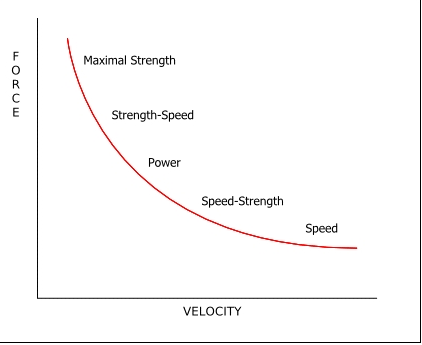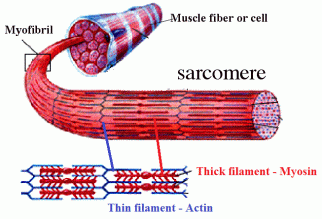What We Train: Part 3 – Strength
by Erik Castiglione
Last week we talked about conditioning, and how the goal is to improve the function of our bodies’ energy systems. We’ve previously written that strength is king, and it affects the 10 other physical attributes of fitness. Today, we’re going to explore the different kinds of strength, how conditioning and skill development play a role, and how we get stronger.
The Different Kinds of Strength
In general, strength is your body’s ability to produce force. As defined by the laws of physics, Force = Mass x Acceleration (F=MA). To generate more force, we can either move more mass, or move the same mass faster. If you’ve ever fought for a 1 rep max and failed, you can attest to the fact that you got progressively more tired the longer you were under tension. If you could have moved the weight faster, you may have successfully completed the lift. So, it’s important to train both M and A in the force equation. Check it out!
Maximum Strength: This is the highest force your body can produce, involving a maximum contraction of muscle. This is what we use/test when we perform a 1 rep max. Our mass (M) in the force equation is at its highest here. This kind of lift uses and exhausts the phosphagen energy system.
Maxing out is also a skill – it requires all your muscles to work together (intermuscular coordination), it requires you to be able to recruit all the muscle you have (intramuscular coordination), and it requires proper technique. Working on maximum strength is a test of this.
Strength-Speed: This is moving near maximal loads (90+%) as fast as possible. Generally speaking, we’re not very fast when moving these loads. Mass (M) is fairly high, but our acceleration (A) suffers a bit. If our sets extend beyond 10 seconds, we use both the phosphagen and glycolytic energy systems. Since we’re near max effort, strength-speed work is great for building inter and intramuscular coordination.
Power: Power is the ability to generate the most possible force in the shortest possible time. Great expressions of power include Olympic lifts (85% and heavier) and plyometrics. When done in short sets, these use the phosphagen system. Longer sets tap into the glycolytic system.
Speed-Strength: This is our ability to generate force rapidly. We limit our loading (M) and focus on performing reps QUICKLY (A). Examples of this type of training include our lifting EMOMs (e.g. 5 box squats EMOM for 5 minutes @60% of back squat max) and Olympic lifts with percentages between 70-80%. Ideally, our reps in our EMOMs should be fast enough that we finish all of them in under 10 seconds. If so, we can effectively train our phosphagen systems and recover completely before the next set. If not, we’ll get progressively more fatigued as the minutes tick by and tap into our glycolytic systems.
Muscular Endurance: This is our ability to produce force in a repetitive manner over time. We exhaust our phosphagen system here and tap into the glycolytic. A good example would be a max set of push-ups.
General Strength: This refers to the ability of our entire muscular systems to create force, as opposed to specific muscle groups. Strongman movements like loaded carries are great examples of how to train this, and the carryover is immense. Louie Simmons once defined strength as “universal muscle recruitment.” If we can fire all our muscles simultaneously, we’ll be strong indeed. I once met a kid who had never lifted a barbell before but grew up on a farm. Within his first month of lifting, he was deadlifting over 500 lbs for reps. General strength for the win!
Specific Strength: This refers to strength in a specific movement pattern. Ever switch from a flat bench press to an incline and see a massive decline in the weight you move? Or, how about moving from a barbell bench to a dumbbell bench? If you haven’t trained the less common variations of the movement, you’re likely to be less strong in them. This is what we mean by specific strength.
Relative Strength: This is strength as a function of bodyweight. If two athletes are capable of lifting the same weight, but one weights less than the other, the lighter athlete has greater relative strength. When we talk about who is stronger amongst athletes of different builds lifting different weights, the argument gets more complicated. In sports like weightlifting and powerlifting, your total weight lifted gets multiplied by a coefficient to give you your Sinclair and Wilkes total, respectively. Essentially, the organizations are attempting to normalize for bodyweight. Still, relative strength tends to favor lighter athletes – the only 3x bodyweight clean and jerks have all been in light weight classes. If you’re truly interested in this subject and how it favors lighter athletes, you can continue reading here.
Absolute Strength: This is strength not related to bodyweight. In all strength sports I can think of, the heaviest lifts have been performed by heavyweight athletes. They have the greatest absolute strength (if you can think of an example that contradicts this, I’d love to hear it. But generally speaking, this is the case.)
Why should we care about any of this? Well, to make you a better athlete, we need to train all types of strength. Our regular training cycle incorporates all types of strength work along the strength/speed continuum. We incorporate general strength with full body movements, specific strength each time we train a particular movement, absolute strength when we max our lifts, and muscular endurance and relative strength when we work on our bodyweight movements. Now we know the types of strength training, so let’s examine how we grow stronger.
How We Get Stronger
In our discussion of maximum strength, we mentioned intermuscular coordination, intramuscular coordination, and technique. Improving any of these will allow you to lift more weight. The 4th way we grow stronger is by growing more muscle. The first 3 aspects are neurological, and the 4th is physiological. Let’s explore them a little more.
Intermuscular Coordination: This is the ability of your various muscle groups to work together to move weight. For instance, even though the prime movers in a strict, overhead press are your deltoids and triceps, if you keep your entire core tight, squeeze your quads, and engage your lats, you’re going to generate more pressing power.
Intramuscular Coordination: This is your ability to recruit all the motor units in a particular muscle. If you can contract all the fibers in a given muscle, you can generate the most possible force from that muscle.
Movement Efficiency: In our discussion of skill progression, we mentioned that improving your technique and therefore bar path can allow you to lift the most weight with the least effort. If you deviate from your ideal, you waste energy. As we approach max effort, you might not have enough energy to save the lift. Conversely, if you improve and get closer to ideal, you can lift more weight without recruiting more muscle.
Muscular Hypertrophy: We can grow stronger by building more muscle. If we have more muscle fibers to recruit, we can produce more force. This is true regardless of our intramuscular coordination. If you can only recruit 50% of a given muscle, that means you recruit half of the available contractile units, called sarcomeres. Even if your recruitment remains at 50%, if you increase the number of units, you increase your force production.
So, 3 out of the 4 ways we grow stronger can be achieved through skill development, and the different types of strength all require the use of the phosphagen energy system. If you’ve read parts 1 and 2 of this series, hopefully you can see the interplay between all 3 components now. Thanks for reading.


